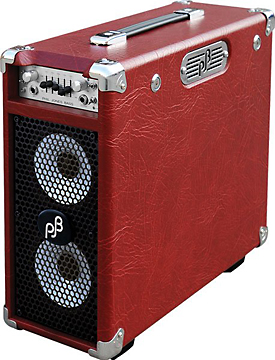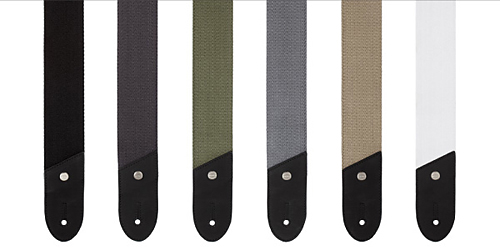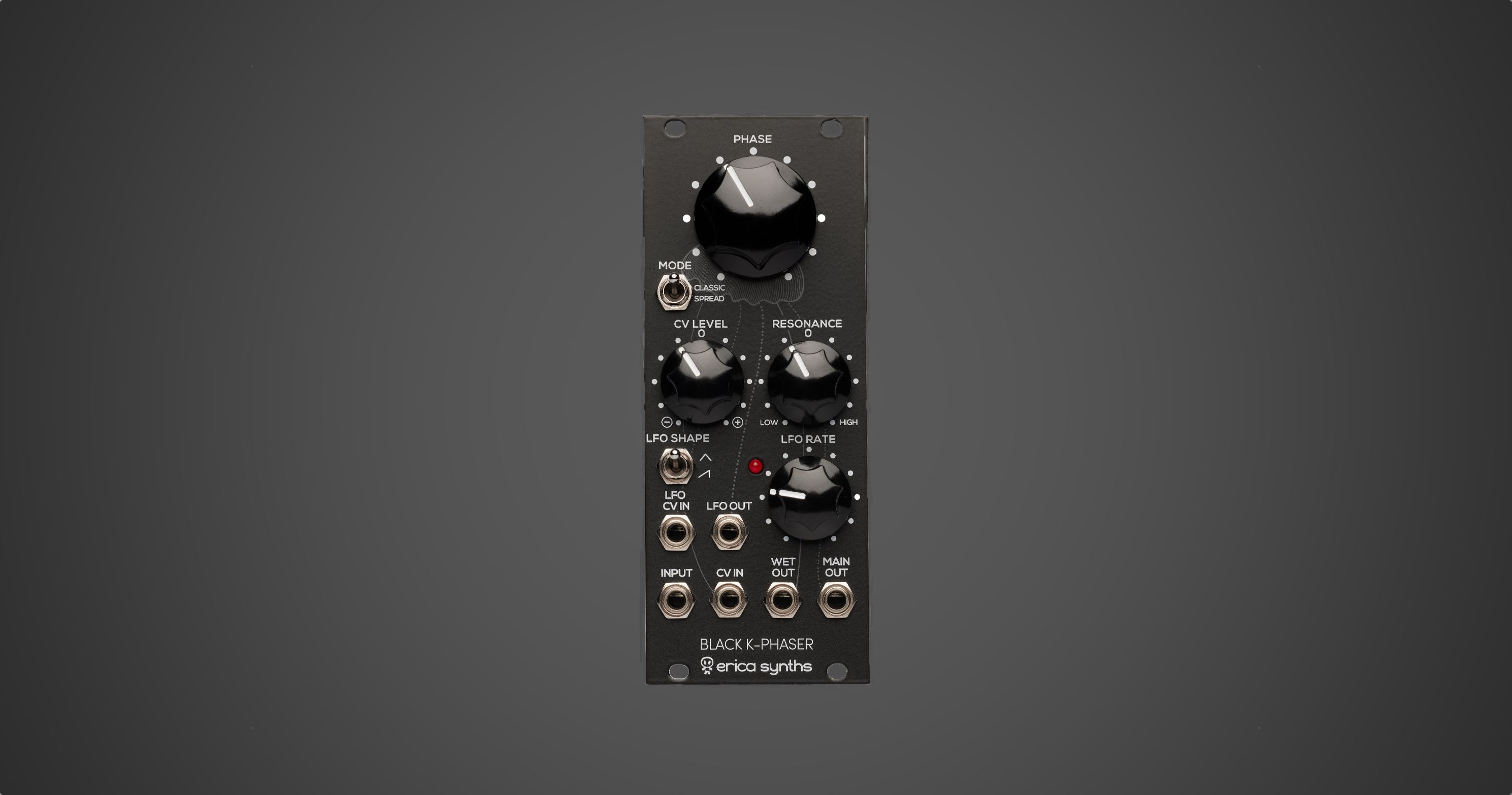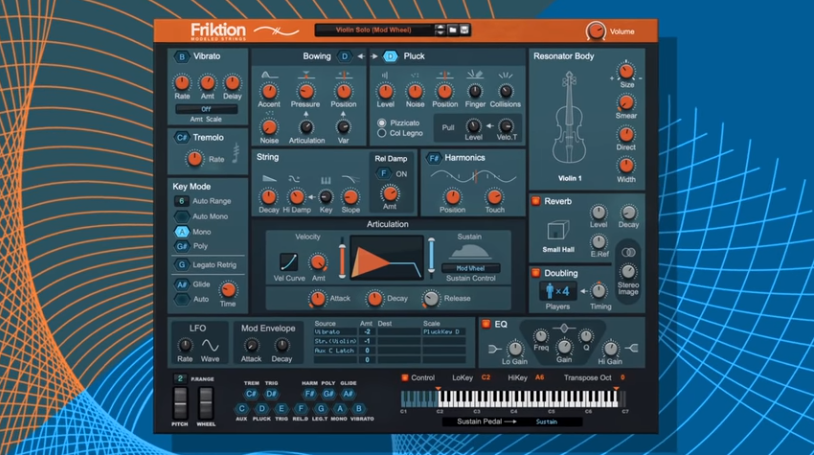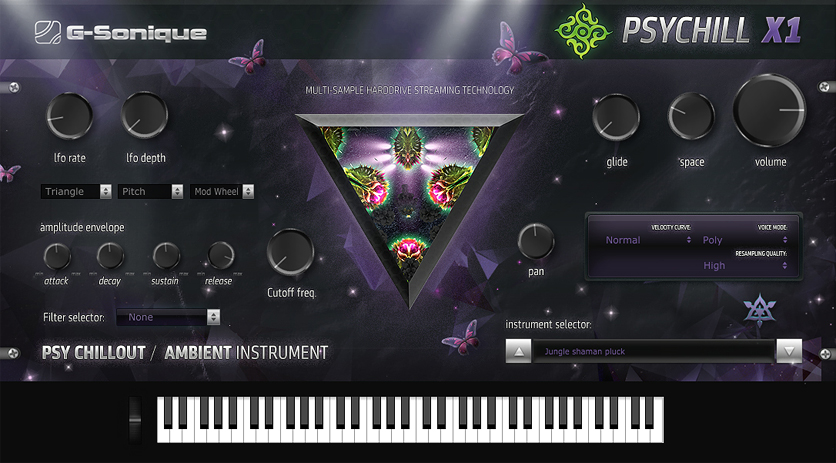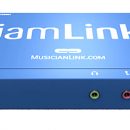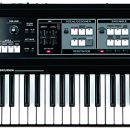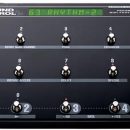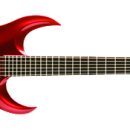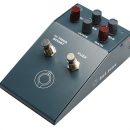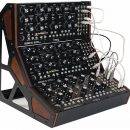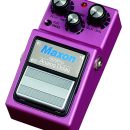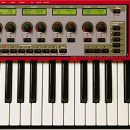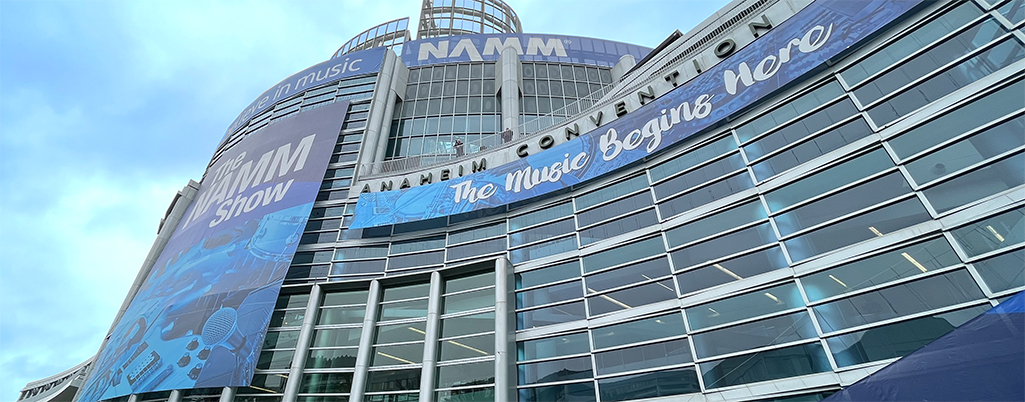 A few months ago, we began hearing word from our friends about a killer new synth called DCAM: Synth Squad. They told us it is a new analog modeling synth, but it's not like anything you've ever played before. Of course, this sparked our curiosity, but we were kind of backed up at the time with other product reviews. Well, we've finally freed up some space on our calendar to check this synth package out and bring you the low-down, and are we glad we did!
A few months ago, we began hearing word from our friends about a killer new synth called DCAM: Synth Squad. They told us it is a new analog modeling synth, but it's not like anything you've ever played before. Of course, this sparked our curiosity, but we were kind of backed up at the time with other product reviews. Well, we've finally freed up some space on our calendar to check this synth package out and bring you the low-down, and are we glad we did!
DCAM is a package of four devices. Three synths: Strobe, Cypher, and Amber, and a rack-type environment called Fusor that lets you stack 3 of the synths together and incorporate effects, an arpeggiator, and sequenced modulation.
| Category | Value | Rating |
| Features | 20% | |
| Usability | 25% | |
| Sound | 25% | |
| Documentation & Support | 10% | |
| Price | 20% | |
| OVERALL RATING = 3.7, which earns it a WIHO Award! 3.6 stars or better: Outstanding, WIHO Award 3 stars or better: Worth considering 2 stars or better: Suited to specific needs 1 star or less: Not recommended |
||
What we found when we dove into these synths were three excellent-sounding analog modeling synths that inspire creativity with their look, feel, and sound. Easy to edit and fun to program, these synths really pack a big wallop of a sound that is inspired by analog monsters from the days of old but also incorporates digital techniques such as FM synthesis and advanced effects.
Some of the high points for us were the versatility, the modulation parameters, and the fact that you can use each synth as an effects unit all by itself.
If you are looking for strong analog-modeling synths, we highly recommend the DCAM suite. Each synth has a firm grasp on today's technology, and the combination of old and new means you will never have stale analog sounds in your productions again.
Features
What would a soft synth these days be without rich features? That's why it's so great to be able to host these in computers, right? Well, we're happy to say that FXpansion have not let us down on the features...
The synths themselves are based on analog synths but don't just stop with analog emulation. Each one has some twists here and there that bring them solidly into the 21st Century such as modulation, mutate-able oscillators, formant filters, and more.
Each one has traditional built-in modulation, such as LFOs and modulation envelopes, but they also have a specially developed modulation system, which FXpansion calls the TransMod system. This is, essentially, eight modulators for each preset. The cool thing is that each modulator can actually modulate several parameters at the same time, as long as you're okay with them all being attached to the same modulator.
For example, you can set it up so that the modulation envelope has a positive effect on the filter but a negative effect on the amp volume. The difference between this and a traditional modulation matrix is that with the traditional matrix setup you generally only have a few ways to modulate and only a few items that can be modulated. With this approach, there is basically no limit to what you can modulate on screen. Although there is a hard limit of eight modulation routings, because each one can modulate several parameters, the number is almost unlimited. Very cool.
The three synths are as follows:
Strobe
This one is a mono-synth on the surface, and its only oscillator is set up so that you can get chord tones out of it with the Detune function. By setting the Voices setting higher than one, you can also play chords, which takes it beyond the normal realm of most mono-synths.

Amber
This is a (kind-of) emulation of the old string machines of the 1970s. It can easily recreate the classic string sounds those synths are famous for, but it also includes a formant filter, and three distinct chorus types (1975, 1981, and 1984) to really get different tones. Way more than just a classic string machine, this synth can really accomplish some great tones, atmospheric as well as leads and basses.

Cypher
Definitely the most forward-thinking of the bunch, Cypher is a three-oscillator synth that merges classic subtractive synthesis and FM synthesis, has an interesting filter structure where the two filters are independent yet connected, and includes a great overdrive section that really lets you drive the sound hard. All of these come together to make a synth that sounds analog yet allows you to create tones that would be impossible on most hardware analog synths.

Fusor
Twenty-seven effects reside in Fusor, which includes EQs, delays, reverbs, phasers, flangers, distortions, and compressors. These effects go beyond the standard fare of each class, though, and usually offer some kind of unique twist on each type. We’ll talk more about that in the Sound section.

A feature that doesn't directly relate to how the synths produce sound is the Browse function. When you open up the Browse tab, a window appears with a list of sounds. While the track is playing, clicking on any of the patch names will instantly switch the sound to that one, even while notes are being held down! So if you're trying to find a new pad sound, just click away and the instruments will change instantaneously. This is a feature we didn't even know we missed until we tried it! Now, any synth that doesn't have this functionality is going to be one step behind.
Usability
Installing and registering DCAM was very easy. The first time you launch the synths after installing, the License Manager opens up automatically. Just enter the serial number and follow the instructions. If you are connected to the Internet, it automatically authorizes your computer for all four programs quickly and painlessly. These kinds of authorization schemes are popping up more frequently, a move that we enjoy immensely.
With synths this powerful, it would be easy to make editing a daunting task, but thankfully, FXpansion has been able to harness all this power and present it in a way that makes sense.
 The overall screen on each synth is well laid out. You can get going quickly without even consulting the users manual, but we highly recommend reading a few pages, as these are complex synths!
The overall screen on each synth is well laid out. You can get going quickly without even consulting the users manual, but we highly recommend reading a few pages, as these are complex synths!
When you open up one of the synths, the first thing you see is the big screen in the middle of the plug-in. FXpansion calls it the Visualizer Scope, and it shows what it is you're editing, or selecting, or even just mousing over! The Visualizer Scope is especially cool because not only does it show you parameter names and amounts, but it also shows you waveforms and movement.
Mousing over any parameter will change what you are seeing in the visualizer. If you're hovering over a filter, for example, and an envelope is modulating that filter, you will see the filter shape on the visualizer scope as well as the movement the envelope applies to it. This is really interesting to look at and helps when you're trying to figure out how much you want the envelope to affect the filter.
Editing can be done in two or three ways, depending on the parameter being edited. Every parameter has a knob that can be twisted. You can double-click these knobs and type in the desired parameter (great for specifying exact amounts). Last but not least, certain selectable parameters can also be accessed via a pull-down menu below the knob. If you're choosing the LFO type, you can choose to either select it with the knob or click on the LFO type name and choose from the menu that pops up. This is a great addition because, for certain parameters, you don't need to twist the knob. It's much faster to just click and select, if you know exactly what it is you're looking for.
Setting up modulation parameters is also pretty easy, once you get your head around the Transmod system. To see what each modulator is doing, just mouse over and it shows the affected parameters themselves in yellow. This allows you to quickly eyeball the routing setup, although it's a bit more difficult to see what the modulators are. Because there are so many modulation devices in the DCAM synths, the hefty list will take some time to go through and get used to. We recommend starting with the obvious devices first (such as LFO, ModEnv, AmpEnv, Velocity, etc), and then go exploring from there. We've included screenshots of the lists, so you can see for yourselves what is included, and drool!
Overall, these synths are easy to use, and features like the visualizer actually encourage creativity!
Sound
The folks at FXpansion say that they created each DCAM synth to stand up on its own, as the classic analog synths do, with no effects to get in the way of pure sonic goodness. They've done a great job of this. Each synth really does sound great alone, even without built-in effects. The sounds are dynamic and rich, and because of the modulation abilities, a lot can be done with things like panning to make the sound come even more alive.
You can definitely tell that these are based on analog synths, as they have beautiful, full tones that call to mind warm tubes, as well as lots of knobs and flexibility. But there is also something more here. Not only is analog tone on display, but with Cypher, FM synthesis gets pulled into the fray, a welcome addition to say the least.
One thing we always look for in an analog synth, or an analog emulation is the sound of the filter. How hard can you push it? Does it really squeal when you ride it hard? Is there stepping when you turn the knob? We're happy to say that the filters on show here beat out a lot of the digital emulations we've heard recently. It's obvious that FXpansion have taken great pains to make sure they got the filter section right. When you push the resonance, you get great oscillation of the signal, and when you twist the frequency knob, there is no stepping that we heard. Overall, the filters are very warm, and can be creamy and smooth, or nasty and squelching when needed.
One of the things we were curious about, and we thought you may be too, was how much sonic variation you can get out of each individual synth. To find this out, we put together a couple of short tracks focused on each synth, only using that particular synth for all the parts. We didn’t have a chance to put together our own Cypher demo, but you can listen to it on the FXpansion website.
Amber Demo
Strobe Demo
But if you aren't in a place where you can listen, then note this: these instruments have variety! The first one we worked with was Amber, and we were pleased to hear that it not only has cool pad tones but also can be programmed to produce deep basses and nice leads as well. Not only that, but with four instances running on our MacBook Pro, we were only pushing the processor to about 48%. Not bad. As you will hear, four instances are enough to make a full-sounding track!
Although we stated earlier that the synths do stand up great without effects, there is always room for a nice delay, a good reverb, or other, more exotic effects to altar the sounds in some way. If this ability were completely left out, believe us when we say that you would have read our complaints here. Fortunately for everyone, FXpansion didn't miss this point and included twenty-seven great-sounding presets within Fusor, the application that pulls all three DCAM synths together. When loaded into Fusor, each synth gets its own set of effects. Three can be loaded onto each synth directly as inserts, and then there are also master effects that can be loaded over all three synths at the same time. This system is very flexible. If you only want to add effects to Strobe, for example, then just load up Fusor, insert Strobe, and pile on up to six effects. This is more than enough for most sound design purposes.
Included in the effects are standard delays, reverbs, choruses, phasers, and flangers. But there are also more advanced effects such as freezer, which can create glitchy effects, and the X4 Quad effects, which allow four bands of the selected effect to run in parallel to each other at the same time, which creates some pretty interesting sounds. Also included in the Fusor effects are four Overloud Breverb effects. These high-quality reverbs sound great. They are licensed directly from Overloud and are a welcome addition if you're looking for realistic reverbs for your synths.
One more thing while we're on the subject of effects: each DCAM synth can be used as an effect unit to run a sound through the filters and modulation. This is done through the Noise oscillator on each, and it's really easy to set up — just throw the FX version of the plug-in you want to use on the track you want to effect, then run a MIDI note to it to trigger the gate. The MIDI note is needed because the oscillator needs to be turned on. The cool thing about this is that you can set up crazy gating sequences to chop up your beats, add pitches to them, and control the shape of the rhythms (or whatever audio it is you're affecting) by changing the various parameters of the synth. Take a listen to our beat loop example here.
Beat Loop Demo
DCAM installs with a lot of sounds presets, which are very usable. The bonus is that when you register the synths, you also get access to artist presets by some top producers including Lenny Dee and company at Industrial Strength Records, Armin Van Buuren, and more. These are a great addition to the already great factory sound set, and can give you some excellent ideas for what these synths are capable of, sonically.
Documentation and Product Support
The two manuals that install with DCAM are the Quick Start Guide and the Operation Manual. The Quick Start Guide offers a comprehensive overview of installing and authorizing the synths, as well as a basic introduction to using them. It is well written and gives useful information for first-time use.
Digging deeper into how to use the synths will require opening up the Operation Manual, a 110-page book that gives instruction on how to use every parameter of the synths. This manual is well laid out, and goes beyond the basics of how-to use, with a bit of background on each instrument's origins in the analog world, and how it corresponds and differs to the hardware it is modeled on. We found this in-depth information to be very useful and interesting in that it gave us some ideas on non-traditional uses for each synth.
Overall, both manuals are well laid out, cover all necessary information and answer any questions the user may have about how to use the synths. Believe us when we say that you will have to read the Operation Manual, especially the modulation section, to make full use of the synths.
FXpansion also gain bonus points by making the Table of Contents click-able. We believe that all PDF manuals should be context-sensitive. If there is a Table of Contents, it makes no sense for it not to be linked to the corresponding page in the main body of electronic text. FXpansion apparently are reading our minds when it comes to this, which makes us very pleased!
Price
FXpansion DCAM (MSRP $349.99) sells for roughly $100 below that, a great buy. This price puts each component at about $87 (at the retail pricing), which seems very reasonable to us. While Fusor isn't technically a synth, it does have great effects and a sequencer section. It allows the creation of many more tones and adds live performance capabilities than you wouldn’t be able to set up in its absence.
Other Comments
The DCAM synths sound phat (yes, with a “ph”), much more so than your average soft-synths. We are not really terribly interested in pure analog emulations and found that the DCAM synths offer a great hybrid between the old and the new. They capture the essence of the analog synths of yore, with warmth, tweakability, and quirkiness, while keeping both feet firmly planted in the technology of today.
Contact Information
FXpansion
www.fxpansion.com
| Evaluation Short-List |
|


